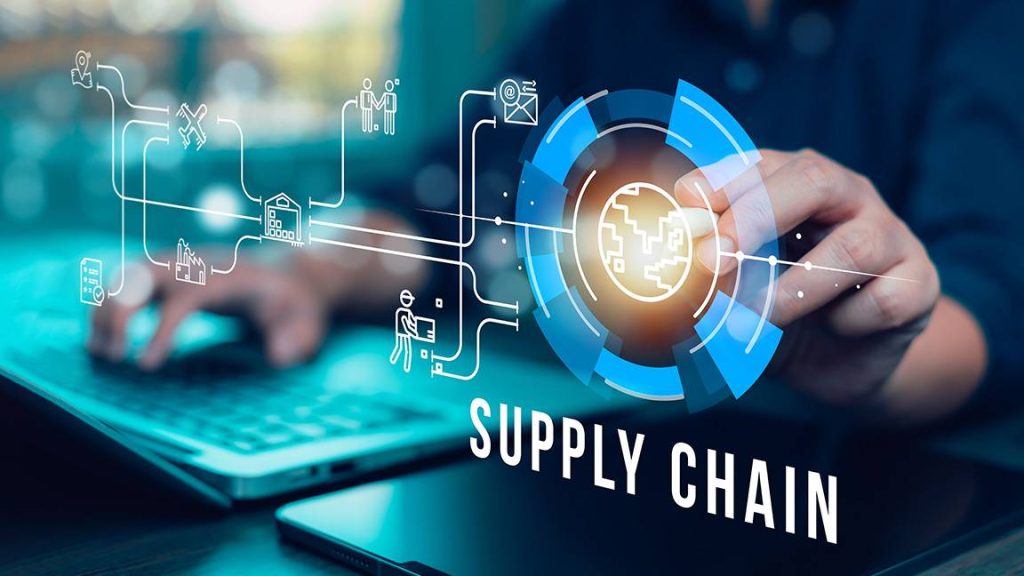Introduction
In the modern global economy, the supply chain is a vital, intricate system that connects businesses, consumers, and industries across borders. The challenges associated with verifying the origins of products, ensuring the integrity of transactions, and ensuring transparency in the movement of goods are significant. Traditional supply chains often suffer from inefficiencies, lack of transparency, and challenges in verifying product authenticity. These issues have only been exacerbated by global disruptions like the COVID-19 pandemic, which underscored the need for more resilient, transparent, and verifiable supply chain management solutions.
Blockchain technology, particularly on-chain data, offers a compelling solution to these problems. By recording every transaction and product movement on an immutable, transparent ledger, blockchain can ensure that every step in the supply chain is verifiable. On-chain data refers to the information stored on a blockchain, including transaction details, product identifiers, timestamps, and other pertinent data related to goods and services. This data can be used to verify each transaction, ensuring product traceability from source to consumer.
This article explores how on-chain data can be leveraged to verify every transaction in the supply chain, providing a clear and transparent path for goods, ensuring product authenticity, preventing fraud, and enhancing consumer confidence. Additionally, the article will discuss the technological, regulatory, and operational challenges involved in implementing blockchain-based supply chain solutions and offer insights into the future of blockchain in supply chain management.
1. Understanding Supply Chain Challenges and the Role of Blockchain
Traditional Supply Chain Problems
The traditional supply chain is often plagued by several challenges, including:
- Lack of Transparency: In traditional supply chains, data is often siloed within different departments and organizations, leading to inefficiencies and lack of visibility. This makes it difficult to track the movement of goods, understand their origins, and ensure product authenticity.
- Counterfeit Goods: Counterfeit products are a significant concern, particularly in industries such as pharmaceuticals, luxury goods, and electronics. Without a reliable verification system, counterfeit goods can enter the market, undermining consumer trust and potentially causing harm.
- Inefficiency and Delays: Traditional supply chains often rely on manual processes and paper-based documentation, which are time-consuming and error-prone. This leads to inefficiencies, delays, and increased costs.
- Fraudulent Transactions: Supply chain fraud is an ongoing issue. For example, fraudulent documentation can be used to manipulate product certifications or misrepresent goods’ origins. This undermines trust in the system and can have significant financial consequences.
- Lack of Real-Time Data: Traditional supply chain models often lack real-time tracking and data sharing. As a result, stakeholders may not have access to up-to-date information, leading to inefficiencies, product shortages, and missed opportunities.
Blockchain and On-Chain Data: A Solution
Blockchain technology offers a decentralized, immutable, and transparent way to record every transaction, making it ideal for addressing the challenges in supply chain management. Specifically, on-chain data provides several benefits:
- Transparency: Blockchain’s transparent nature allows stakeholders to track the movement of goods in real time, from production to delivery. Each transaction, shipment, and change of ownership is recorded on the blockchain and accessible to authorized participants.
- Immutability: Once a transaction is recorded on the blockchain, it cannot be altered or deleted, ensuring that the supply chain data is accurate, reliable, and tamper-proof. This prevents fraud and manipulation of data.
- Traceability: On-chain data can record every step in the supply chain, from the raw materials sourced to the final product reaching the consumer. This creates an auditable trail that enhances product authenticity and facilitates recalls when necessary.
- Smart Contracts: Blockchain-based smart contracts can automate supply chain processes, ensuring that contracts are executed as agreed and reducing the risk of human error or fraud.
How Blockchain Enhances Product Traceability
On-chain data, by its very nature, provides an unparalleled level of traceability. By embedding unique identifiers (like QR codes or RFID tags) into products and recording their journey through the supply chain, blockchain can offer the following benefits:
- Source Verification: By recording the origin of materials on the blockchain, businesses can verify the ethical and sustainable sources of their products.
- Real-Time Tracking: With blockchain, businesses can track products at every stage of their journey. For example, real-time tracking of shipments can reduce the risk of theft, fraud, and delays.
- Proof of Authenticity: On-chain data allows businesses to prove the authenticity of their products by displaying their entire journey—from origin to delivery.
2. The Role of On-Chain Data in Supply Chain Management
1. Product Verification and Authentication
In many industries, the authenticity of products is paramount. Counterfeit goods are a significant problem, particularly in sectors such as pharmaceuticals, luxury items, and electronics. On-chain data can provide a foolproof method of ensuring that products are genuine and that their origins can be traced.
Example: Pharmaceuticals
In the pharmaceutical industry, counterfeit drugs pose serious risks to health and safety. On-chain data allows pharmaceutical companies to track drugs through every stage of the supply chain, from manufacturing to delivery, ensuring that the product reaching the consumer is authentic and safe.
Example: Luxury Goods
In the luxury goods market, the value of a product often relies on its authenticity and provenance. By using blockchain to track and verify the history of luxury items, such as watches or designer handbags, companies can offer consumers a trusted way to verify that the products they purchase are genuine.
2. Increased Transparency and Accountability
With traditional supply chains, transparency can be difficult to achieve. On-chain data enables real-time, transparent access to transaction details, which are available to all authorized participants in the supply chain. This can be crucial for building trust with consumers, investors, and regulators.
Example: Ethical Sourcing
Consumers today are increasingly concerned with the ethical sourcing of products. On-chain data can ensure that companies adhere to fair labor practices, sustainable sourcing, and environmentally friendly production methods. By providing transparency about the origins of materials and goods, blockchain enables businesses to prove their commitment to sustainability.
3. Fraud Prevention and Risk Reduction
Fraud is a persistent issue in traditional supply chains, whether it’s in the form of misreported data or falsified certificates of origin. By recording all data on an immutable blockchain, the possibility of fraud is significantly reduced, as each transaction is verified by multiple parties on the network.
Example: Agricultural Products
Agricultural products are often susceptible to fraud, with suppliers misrepresenting the quality or source of goods. Blockchain allows buyers to verify that agricultural products, such as organic produce, come from certified farms and adhere to quality standards.
4. Streamlined Processes and Efficiency
The use of blockchain in supply chains can streamline processes and reduce inefficiencies. By removing intermediaries, simplifying documentation, and automating contract execution, blockchain can cut down on administrative costs, eliminate errors, and speed up processes.
Example: Automating Payments with Smart Contracts
Smart contracts can automate many supply chain functions, such as triggering payments when goods are delivered or when specific milestones are achieved. This reduces the need for human intervention, speeds up transactions, and ensures that contracts are executed fairly and consistently.

3. Challenges and Solutions for Implementing On-Chain Data in Supply Chains
While the potential benefits of on-chain data in supply chain management are clear, there are several challenges to implementing blockchain solutions effectively.
1. Integration with Existing Systems
Integrating blockchain into legacy supply chain systems can be challenging, as many businesses rely on traditional methods of data management. The integration of on-chain data into these existing systems requires careful planning, technical expertise, and, in some cases, significant infrastructure upgrades.
Solution: Interoperability Standards
The development of interoperability standards can help blockchain-based systems work seamlessly with existing enterprise resource planning (ERP) and supply chain management systems. Solutions like cross-chain platforms and middleware solutions can facilitate integration by enabling data to flow smoothly between legacy systems and blockchain networks.
2. Scalability
As supply chains grow in complexity, scalability becomes an issue. Blockchains, particularly public ones, can experience congestion and delays when handling large amounts of data. This is particularly problematic in industries like retail, where high transaction volumes occur regularly.
Solution: Layer 2 Solutions and Private Blockchains
To address scalability concerns, businesses can leverage Layer 2 solutions (such as state channels or rollups) that process transactions off-chain before recording them on the main blockchain. Private or permissioned blockchains, which are faster and more efficient for enterprise use, can also be an effective solution.
3. Privacy and Confidentiality
While transparency is essential, there are also concerns about the privacy of business-sensitive data. Companies may be hesitant to disclose proprietary information such as pricing, contracts, or supplier agreements on a public ledger.
Solution: Zero-Knowledge Proofs and Privacy Coins
To address privacy concerns, technologies like zero-knowledge proofs (ZKPs) can be used to verify transactions and data without revealing the underlying information. Privacy coins and private blockchain networks also allow businesses to keep sensitive data confidential while still ensuring traceability and authenticity.
4. Adoption and Collaboration
For blockchain-based supply chains to be effective, multiple stakeholders—such as suppliers, manufacturers, and logistics providers—must adopt the technology. The adoption of blockchain across the supply chain can be slow, especially among small and medium-sized enterprises (SMEs) that lack the resources to invest in new technology.
Solution: Collaborative Ecosystems
Building collaborative ecosystems where industry stakeholders share a common interest in blockchain adoption can
help overcome resistance. Industry-wide initiatives, such as trade associations and platforms, can promote blockchain adoption by standardizing solutions and fostering trust among participants.
Conclusion
The use of on-chain data in supply chain management represents a significant advancement in ensuring the traceability, transparency, and authenticity of goods and transactions. Blockchain offers the potential to solve many of the issues that have plagued traditional supply chains for years, including fraud, inefficiency, and lack of transparency. By leveraging on-chain data, businesses can not only improve the security and reliability of their supply chains but also create new opportunities for innovation and growth.
However, the successful implementation of blockchain in supply chains is not without challenges. Businesses must carefully consider issues such as integration with legacy systems, scalability, privacy, and adoption. By addressing these challenges with innovative solutions, blockchain has the potential to revolutionize supply chain management, making it more transparent, efficient, and trustworthy than ever before. The future of supply chain management lies in the ability to leverage on-chain data to track, verify, and optimize every aspect of the supply chain.

















































